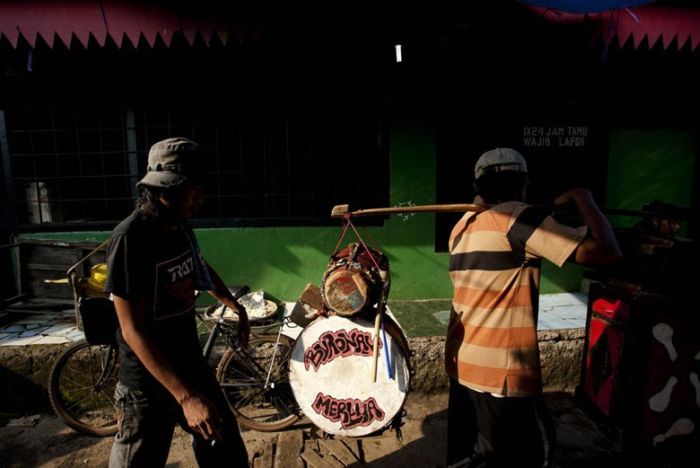Monkey Performs On The Street, Indonesia
|
According to the Oxford English Dictionary, the word "monkey" may originate in a German version of the Reynard the Fox fable, published circa 1580. In this version of the fable, a character named Moneke is the son of Martin the Ape. The word Moneke may have been derived from the Italian monna, which means "a female ape".
The term 'monkey' is an artificial grouping; it is not a "good" taxon, but instead it is a paraphyletic group, like "fish". A "good" taxon, as most modern biologists consider it, is a monophyletic group, that is, a group consisting of all the evolutionary descendants of a single ancestor species. The term 'monkey' covers all platyrrhines (flat, broad noses) and some catarrhines (nostrils-downwards), but excludes the apes.
Due to its size (up to 1 m/3 ft) the Mandrill is often thought to be an ape, but it is actually an Old World monkey. Also, a few monkey species deceptively have the word "ape" in their common name, such as the Barbary Ape.
A group of monkeys may be referred to as a mission or a tribe.
|
|















